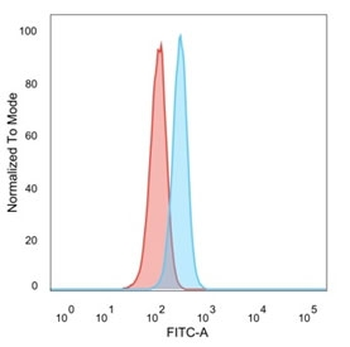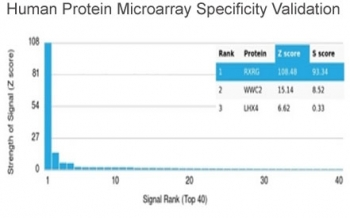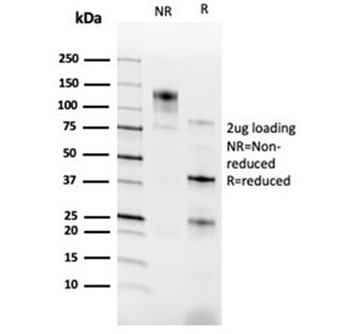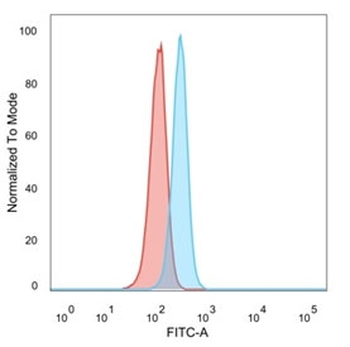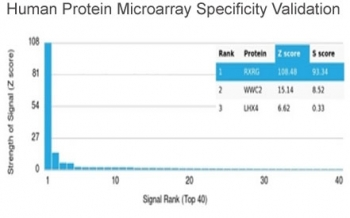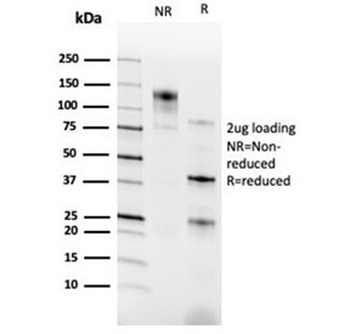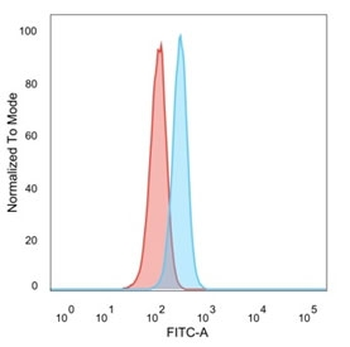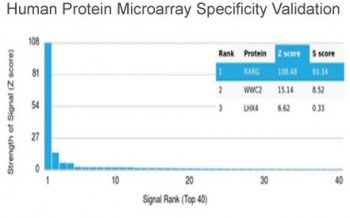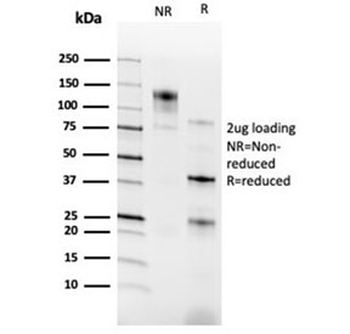You have no items in your shopping cart.
RXRG Antibody
Catalog Number: orb1824342
| Catalog Number | orb1824342 |
|---|---|
| Category | Antibodies |
| Description | Two families of retinoid receptors, RARs and RXRs, have been identified. Retinoic acid receptors (RARs) include RARa, RARb and RARg, each of which have a high affinity for all trans-retinoic acids and belong to the same class of nuclear transcription factors as thyroid hormone receptors, vitamin D3 receptor and ecdysone receptor. The ligand-binding domains of the RARs are highly conserved and RAR isoforms are expressed in distinct patterns throughout development and in the mature organism. Members of the retinoid X receptor (RXR) family, RXRa, RXRb and RXRg, are activated by 9-cis-RA, a stereo- and photo-isomer of all trans-RA that is expressed in vivo in both liver and kidney and may represent a widely used hormone. As is true for the RAR subfamily, the RXR receptors are closely related to each other both in their DNA-binding and ligand-binding domains and are encoded by separate genes at distinct chromosomal loci. |
| Species/Host | Mouse |
| Clonality | Monoclonal |
| Clone Number | PCRP-RXRG-5C9 |
| Tested applications | FACS |
| Reactivity | Human |
| Isotype | Mouse IgG2b |
| Immunogen | Recombinant human RXR gamma protein was used as the immunogen for the RXRG antibody. |
| Antibody Type | Primary Antibody |
| Dilution range | Flow cytometry: 1-2ug/million cells |
| Conjugation | Unconjugated |
| Formula | 0.2 mg/ml in 1X PBS with 0.1 mg/ml BSA (US sourced), 0.05% sodium azide |
| Hazard Information | This RXR gamma antibody is available for research use only. |
| UniProt ID | P78347 |
| Storage | Aliquot the RXR gamma antibody and store frozen at -20°C or colder. Avoid repeated freeze-thaw cycles. |
| Note | For research use only |
| Expiration Date | 12 months from date of receipt. |
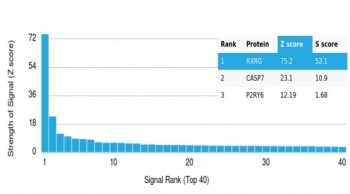
Analysis of a HuProt (TM) microarray containing more than 19000 full-length human proteins using RXR gamma antibody (clone PCRP-RXRG-5C9). Z- and S- Score: The Z-score represents the strength of a signal that a monoclonal antibody (in combination with a fluorescently-tagged anti-IgG secondary antibody) produces when binding to a particular protein on the HuProt (TM) array. Z-scores are described in units of standard deviations (SD's) above the mean value of all signals generated on that array. If targets on HuProt (TM) are arranged in descending order of the Z-score, the S-score is the difference (also in units of SD's) between the Z-score. S-score therefore represents the relative target specificity of a mAb to its intended target. A mAb is considered to specific to its intended target, if the mAb has an S-score of at least 2.5. For example, if a mAb binds to protein X with a Z-score of 43 and to protein Y with a Z-score of 14, then the S-score for the binding of that mAb to protein X is equal to 29.
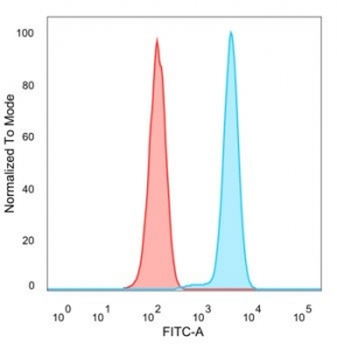
Flow cytometry testing of PFA-fixed human HeLa cells with RXR gamma antibody (clone PCRP-RXRG-5C9) followed by goat anti-mouse IgG-CF488 (blue); Red = unstained cells.
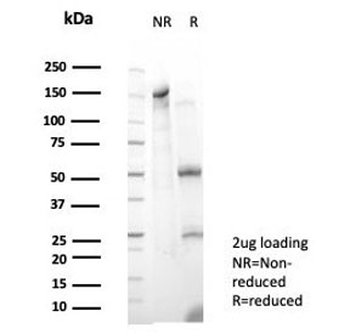
SDS-PAGE analysis of purified, BSA-free RXR gamma antibody (clone PCRP-RXRG-5C9) as confirmation of integrity and purity.
Goat anti-RXR gamma Antibody [orb18909]
ELISA, WB
Bovine, Canine, Human, Mouse, Porcine, Rat
Goat
Polyclonal
Unconjugated
100 μg





